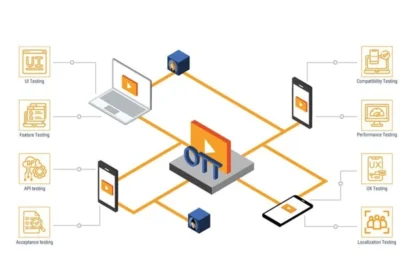The United States continues to be a leading destination for professionals around the world seeking career opportunities. Its diverse economy, innovative industries, and global influence make it an attractive choice for skilled workers. Yet, navigating the U.S. immigration system can be challenging. With multiple visa categories, complex regulations, and strict timelines, workers must understand their options to make informed decisions.
This guide provides an overview of the most common U.S. employment visa options and explains how workers can pursue opportunities while maintaining compliance with immigration law.
Why Understanding Employment Immigration Matters
Employment-based immigration serves as a bridge between global talent and U.S. employers. Each visa type comes with specific eligibility requirements, benefits, and limitations. For workers, choosing the right path is essential to achieving career goals while avoiding legal pitfalls.
Employers also benefit when their workforce understands the immigration process. Clear communication about visa options helps businesses recruit and retain international talent with confidence. For many professionals, working with a Chicago employment immigration lawyer or similar expert provides the clarity needed to navigate this complex system.
Temporary Employment Visa Options
H-1B Visa for Specialty Occupations
The H-1B visa is one of the most sought-after employment visas in the U.S. It allows employers to hire foreign workers in specialized fields such as technology, engineering, healthcare, and finance. Applicants must hold at least a bachelor’s degree or its equivalent, and employers must demonstrate that the position requires specialized knowledge.
The H-1B visa is subject to an annual cap, making the process competitive. Workers must often rely on employers to submit petitions during a limited filing window. While the visa provides opportunities for temporary employment, it also serves as a stepping stone toward permanent residency for many professionals.
L-1 Visa for Intracompany Transfers
The L-1 visa is designed for employees of multinational companies who are transferred to U.S. offices. It is available for executives, managers, or employees with specialized knowledge. This visa strengthens global business operations by allowing companies to move key personnel seamlessly across borders.
Workers on an L-1 visa may eventually qualify for permanent residency under certain employment-based categories, particularly if they hold executive or managerial positions.
O-1 Visa for Individuals with Extraordinary Ability
The O-1 visa is tailored for individuals with exceptional skills in sciences, arts, education, business, or athletics. Applicants must demonstrate a high level of achievement, such as awards, publications, or recognition in their field. While challenging to obtain, this visa offers unique opportunities for highly accomplished professionals.
Temporary Work Visas for Other Roles
Additional temporary visas include the H-2B visa for seasonal non-agricultural work and the TN visa for Canadian and Mexican professionals under the USMCA agreement. Each has specific requirements and benefits, making it important for workers to evaluate which best fits their qualifications and career plans.
Permanent Employment Visa Options
Employment-Based Green Cards
Workers who wish to establish long-term careers in the U.S. often pursue employment-based green cards. These visas grant lawful permanent residency and are divided into preference categories.
The EB-1 category is reserved for individuals with extraordinary abilities, outstanding professors and researchers, and multinational executives. The EB-2 category applies to professionals with advanced degrees or exceptional abilities in specific fields, while the EB-3 category includes skilled workers and professionals with bachelor’s degrees.
Employers often sponsor workers for these visas, but some categories allow for self-petition. The process can be lengthy, involving labor certification, petitions, and waiting periods depending on visa availability.
Pathways from Work Visa to Permanent Residency
Many workers begin with temporary visas such as H-1B or L-1 and later transition to employment-based green cards. Planning this pathway early with the help of compassionate immigration law experts can reduce delays and ensure eligibility. Understanding visa timelines, quotas, and legal requirements is critical for professionals seeking long-term residency.
Challenges Workers May Face
Complexity of the Application Process
Immigration applications often involve extensive documentation, including proof of qualifications, job offers, and compliance with U.S. labor laws. Errors or omissions can result in delays or denials, making legal guidance essential.
Quotas and Backlogs
Certain visa categories are subject to annual caps or per-country limits, creating backlogs for applicants from high-demand countries. Workers must be prepared for waiting periods and consider alternative visa options if delays are likely to affect career plans.
Maintaining Status
Workers must adhere to the conditions of their visas, such as working only for the sponsoring employer or maintaining specific roles. Violating these conditions can jeopardize legal status and future immigration opportunities.
The Importance of Legal Guidance
For many professionals, navigating the U.S. immigration system without expert help is overwhelming. Consulting with a Chicago employment immigration lawyer provides clarity on eligibility, documentation, and timelines. These lawyers can also represent workers in cases of disputes, denials, or complex petitions.
Equally important is finding legal support that understands the human side of immigration. Compassionate immigration law experts recognize the emotional challenges workers and their families face during transitions. They combine legal knowledge with empathy, helping clients achieve both professional and personal stability.
Preparing for a Successful Application
Gathering Documentation Early
Workers should begin by collecting educational credentials, professional experience records, and supporting documentation as early as possible. Having complete files reduces stress and prevents last-minute delays.
Communicating with Employers
Since many visas require employer sponsorship, open communication is critical. Workers should ensure their employers understand the process and are prepared to provide the necessary documentation.
Planning Long-Term Goals
Professionals should evaluate whether they plan to remain in the U.S. temporarily or seek permanent residency. This helps determine which visa path aligns with their career and personal objectives.
Employment Immigration in a Global Economy
Global mobility is becoming increasingly important in today’s economy. Companies depend on international talent to innovate, compete, and expand into new markets. Workers who understand the U.S. immigration landscape position themselves as strong candidates for these opportunities.
By combining personal preparation with professional legal guidance, foreign workers can navigate the system effectively and build successful careers in the U.S. Immigration compliance and strategic planning are not just legal necessities—they are tools for achieving long-term goals.










